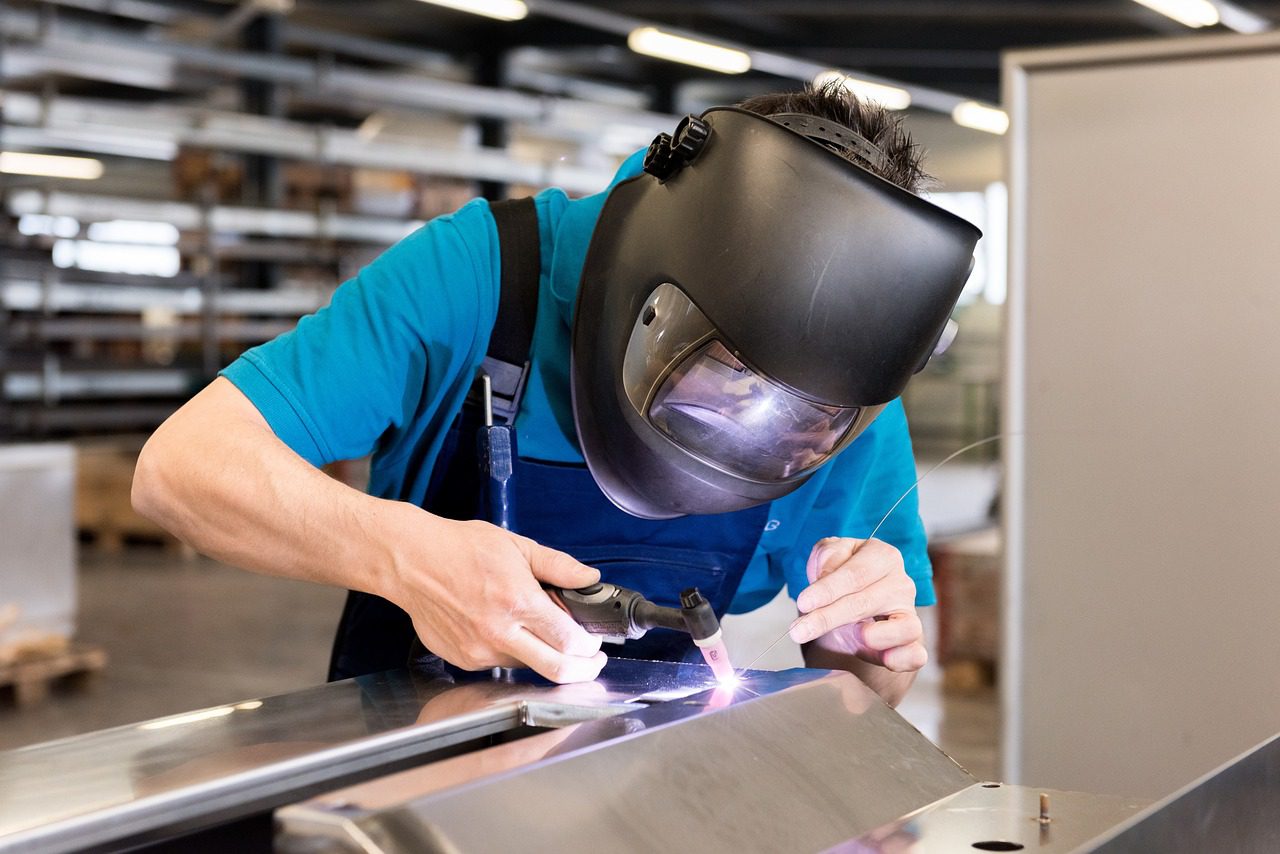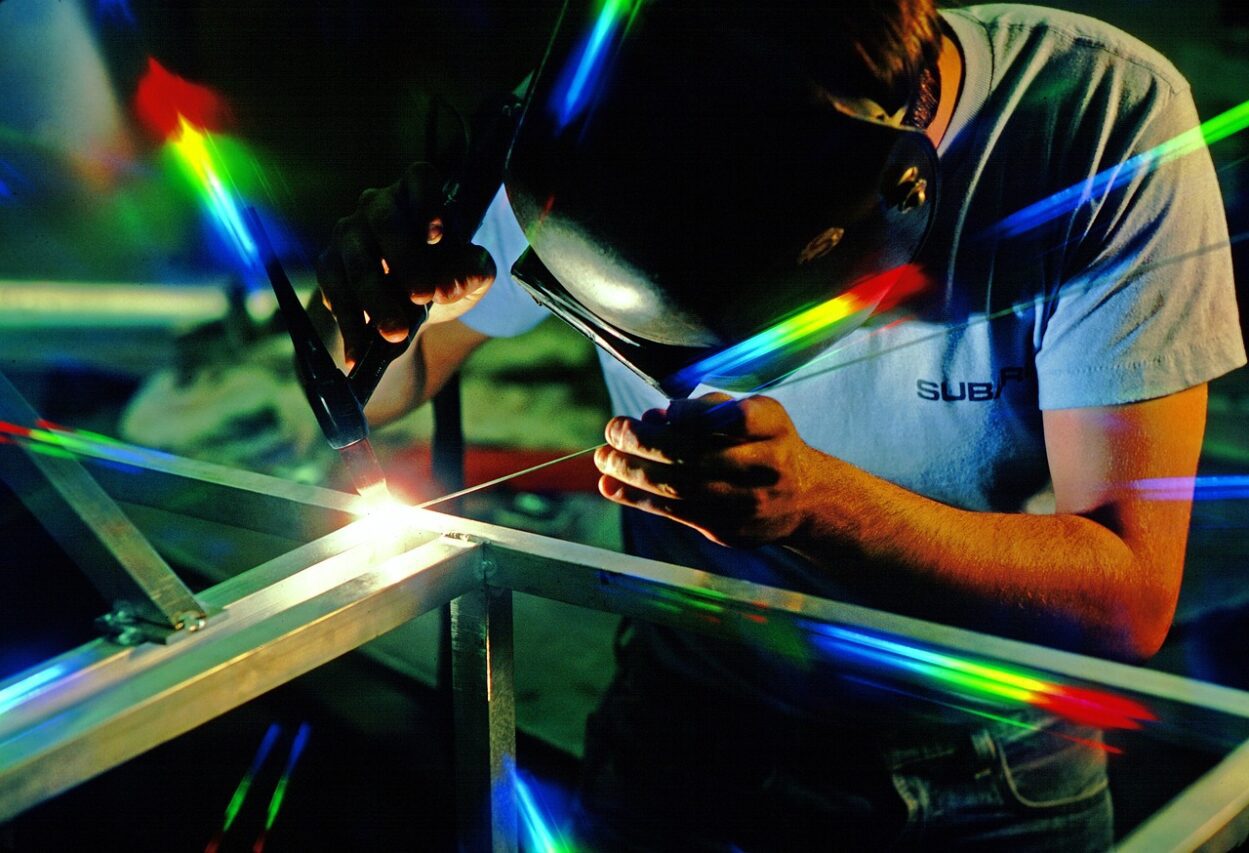Welding is a fabrication process that joins materials, usually metals or thermoplastics, by using high heat to melt the parts together and allowing them to cool, causing fusion. There are many different types of welding, each with its own advantages and best uses. Understanding the various welding techniques available and their applications allows for selecting the optimal method for different manufacturing and construction projects.
Welding Processes
There are several main types of welding processes used in industry today:
Arc Welding
Arc welding uses an electrical arc between an electrode and the base material to melt the metals at the welding point. The electrode can either be consumable, in which case it provides filler material, or non-consumable, in which case a separate filler rod is used. An electrical power supply creates an electric arc between the electrode and the metals to be joined. The localized heat generated by the arc melts the base metal and allows them to mix. Arc welding can use direct (DC) or alternating (AC) current, and requires a shielding gas to protect the weld area from oxidation and contamination.
Popular arc welding processes include shielded metal arc welding (SMAW), gas metal arc welding (GMAW), flux-cored arc welding, and gas tungsten arc welding (GTAW).
Gas Welding
Gas welding involves melting and joining metals using a gas flame rather than an electric arc. The flame is produced by the combustion of fuel gases such as acetylene combined with oxygen. The heat from the flame melts the metal edges being joined as well as a filler rod that is used to supply extra molten material. Gas welding is suitable for thinner metals and is portable making it useful in field work.
Common gas welding processes are oxy-fuel welding, air acetylene welding, pressure gas welding, and atomic hydrogen welding techniques. Shielding gases are often used to protect the weld from contaminants.
Resistance Welding
In resistance welding, heat is generated by passing an electrical current through the resistance caused by the contact between two or more metal surfaces. The metals are pressed together and the direct flow of current through the point of contact causes localized heating and melting. No filler material is typically used.
Resistance welding techniques include spot welding, seam welding, projection welding, and flash welding. It is a fast and economical process but is limited to thinner sheets of metal.
Solid-State Welding
Solid-state welding processes produce bonds in metals without melting the base materials. Pressure and heat are used to cause coalescence between the metal grains. Because there is no melting, solid-state welding avoids problems with rapid cooling and distortion.
Friction welding, forge welding, cold welding, diffusion welding, and ultrasonic welding are common solid-state processes.
Energy Beam Welding Techniques
Energy beam welding uses a concentrated heat source from either a laser or an electron beam to melt and fuse the materials. The laser or electron beam provides an intense, precisely controlled heat input allowing for high welding rates and deep penetration. Welds made with energy beams have a small heat-affected zone and minimal distortion.
Laser beam welding and electron beam welding allow the welding of dissimilar or hard-to-weld metals. The equipment required is complex and expensive.
Welding Applications
Different welding methods are better suited for certain applications based on the characteristics of each process and the requirements of the weld.
Automotive Welding
Arc welding, especially GMAW and GTAW, is extensively used in automotive manufacturing to join vehicle frames, engines, chassis components, and body panels. Resistance spot welding is the main process for attaching automotive sheet metal parts. Robotic welding helps improve efficiency and precision in auto manufacturing.
Construction Welding
Stick welding and flux-cored arc welding are commonly used at construction sites because the equipment is portable and able to operate on generator power. GMAW is also popular for construction welding. Welding allows assembling structural steel frames for buildings, joining pipes, erecting fire escapes, railings, and more.
Aerospace Welding
The aerospace industry relies heavily on advanced welding technology. Gas tungsten arc welding provides the high-strength, high-quality welds needed for aircraft parts and components. Laser beam welding offers low distortion and excellent metallurgical properties for applications like jet engine turbine blades. Electron beam welding is used in rocket motor casings.
Shipbuilding Welding
Most shipbuilding requires manual arc welding techniques. Ship hulls are assembled from huge steel plates that are tack welded into place and then finished welded using processes like submerged arc welding. Building and repairing ships relies on welders proficient in GMAW, GTAW, FCAW and SMAW.
Manufacturing Welding Techniques
Manufacturing facilities apply various welding methods for fabricating metal components. Resistance welding efficiently joins overlapping sheets of steel. Laser welding provides clean, accurate welds for delicate medical devices. Automated GMAW welding allows high-volume production. Orbital Welding maintains quality pipe welds on pharmaceutical plumbing.
Welding Materials
Choosing suitable welding materials is crucial for obtaining proper fusion between parts and ensuring a strong bond.
- Steels: Different alloy steels have various welding characteristics. Low-carbon steels are easier to weld than high-carbon, high-strength steels. Stainless steels require inert shielding gas, low heat input, and special filler material to avoid cracking.
- Aluminium: Pure aluminium has good weldability. Alloys like 6061 are readily welded by MIG or TIG. More specialized techniques are needed for high-strength alloys like 7075.
- Nickel Alloys: Nickel and nickel-iron alloys are readily welded. Nickel copper alloys face challenges like cracking that require the right filler material and welding procedures.
- Titanium: Challenging to weld due to rapid oxidation. TIG welding with inert shielding is the preferred process. Needs sufficient heat input but low heat at any point.
- Magnesium: Prone to oxidation and porosity. TIG welding with inert gas shielding is the prime welding process for magnesium. Strict procedures must be followed.
Welding Safety
Proper safety precautions need to be taken due to the inherent hazards of welding including heat, fire, electricity, fumes, gases, and ultraviolet radiation.
- Protective Clothing: Non-flammable protective garments, hats, and hoods should be worn. Cotton and leather gloves shield from sparks and electrical currents.
- Eye Protection: Safety glasses or protective goggles must be worn under the welding helmet to guard eyes from flying sparks and intense ultraviolet light.
- Respiratory Gear: Use ventilated hoods or facemasks with air filter cartridges to avoid inhaling toxic welding fumes. Proper ventilation of work areas is critical.
- Safe Work Habits: Keep flammable objects away from the welding area. Ensure cables are properly insulated. Turn machines off when not in use. Maintain a respectful distance from other welders.
Welding Equipment
Having the proper welding equipment suitable for the job is vital for operational efficiency and safety. Essential welding gear includes:
- Power Supply: Provides constant current or voltage depending on the requirements. Common types are transformer, rectifier, inverter, and generator.
- Welding Torch/Gun: Holds the electrode and delivers shielding gas. Shape and size varies based on process. Designed to be insulated and comfortable for the welder.
- Electrode Wire: The filler metal rod, wire, or electrode that is melted by the arc to join metals. Proper electrode selection prevents defects.
- Shielding Gas Cylinders: Provides inert or active gas to protect hot welds from oxygen and water vapor contamination. Argon, helium, CO2 and mixtures used.
- Filler Metal: Supplies molten material to fill the weld joint. Often supplied as wire rolled onto spools but also as rod, foil, chips, etc. Match composition to the base metal.
- Safety Equipment: Essential gear like welding helmet, protective clothing, gas mask, glasses, screens, ventilation system, and fire extinguishers.
Welding Inspection
Examining welds through proper inspection and testing shows whether they meet quality standards and identifies problems requiring correction. Some methods include:
- Visual Inspection: The simple, basic technique of looking over the weld for defects like cracks, porosity, poor fit-up and spatter.
- Liquid Penetrant Testing: Detects surface-breaking defects by applying a colored dye that seeps into cracks via capillary action.
- Magnetic Particle Testing: Uses magnetic fields and iron powder to locate surface and near-surface flaws in ferromagnetic materials.
- Radiographic Testing: X-rays or gamma rays produce internal images of the weld revealing defects like voids and inclusions.
- Ultrasonic Inspection: High-frequency sound waves passed through the weld reveal internal discontinuities and material thickness.
- Destructive Testing: Evaluates weld quality by breaking test specimens and examining the fracture characteristics.
There are a wide variety of welding techniques available to join metals for all types of manufacturing, construction and repair projects. Understanding the advantages, limitations and applications of processes like MIG, TIG, stick, flux-cored, gas, resistance, laser, electron beam and solid-state welding allows for selecting the optimal welding method. Proper training in equipment use and safety procedures minimizes risks inherent in welding. With the right welding process, materials, equipment and inspection, high-quality, long-lasting welded products can be achieved.












